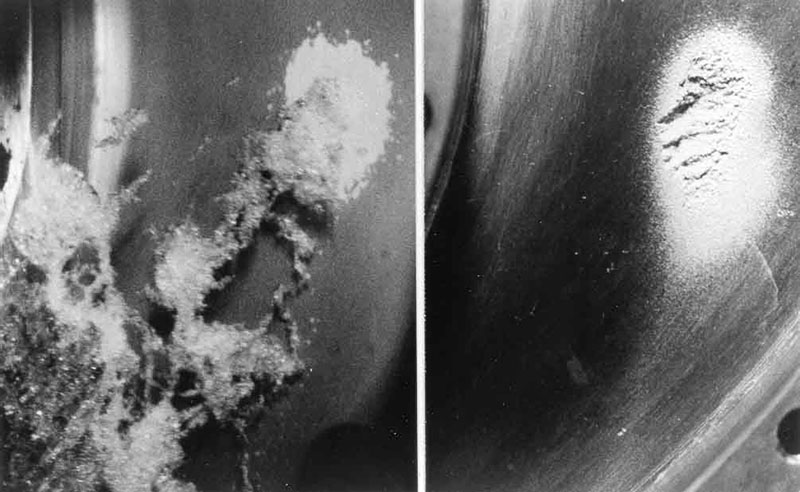According to another hypothesis, however, when the bubble is near the sidewall, the collapse of the bubble occurs asymmetrically. The higher speed of condensation on the side opposite the wall induces the formation of a liquid jet at high speed which slits the vapor bubble and hits the wall itself. The energy transmitted following this impact can, over time, lead to erosion of the material due to fatigue stress.
The collapse of a vapor bubble acts as a trigger for the collapse of other bubbles.
In many devices it was observed that cavitation damage occurs in very localized areas, for example in a pump impeller. Often this is the result of the periodic collapse of a cloud of cavitation bubbles.
In nearly all of these cases, the consistent collapse of the cloud can cause much more intense noise and more prone to damage than a similar non-periodic flow. In this way the damage is more serious on the solid surface close to the location of the cloud explosion.
The question of whether cavitation damage is caused by micro jets or shock waves or both has been debated for many years. But even after the break caused by the micro-jet we find ourselves with a cloud of small residual bubbles that will continue to collapse collectively. Even if it is no longer a single bubble, this residual cloud will still have the same qualitative dynamic behavior as the possible production of a shock wave.






